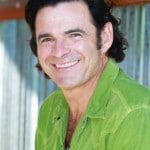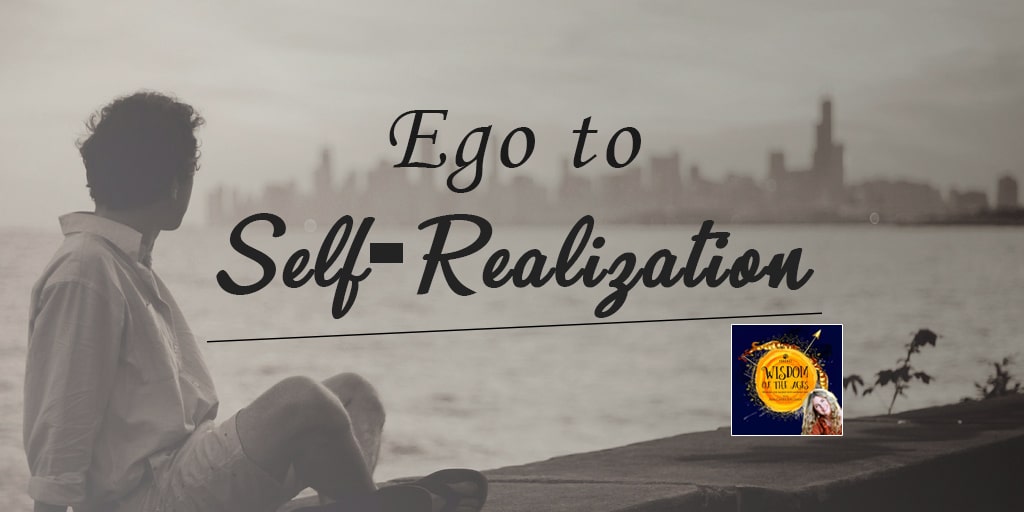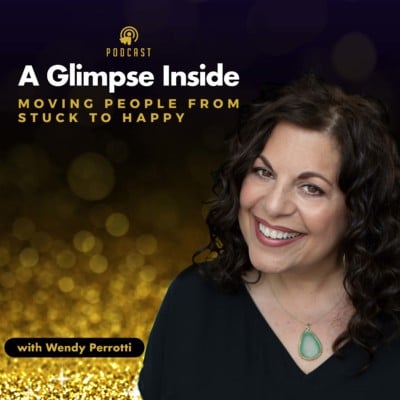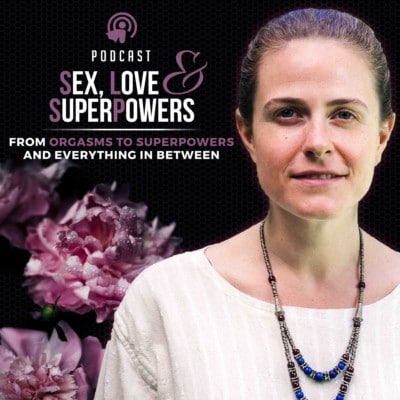
Are you ready to explore the way in which you can become free and even self-realized? If so, you’re going to love this show. This is Super Power Expert host Ayn Cates Sullivan on Wisdom of the Ages.
I’d like to begin the podcast today with a quote from the Indian Sage, Ramana Maharshi: “Your own self-realization is the greatest service you can render the world.” Now I’d like to introduce one of my very favorite people on the planet, a Yogi I have known for many years, maybe even many lifetimes, John Patrick Sullivan. So, let me tell you a bit about him. John Patrick Sullivan is a former NFL linebacker who started his spiritual practice on the football field, and that was where he first learned about presence. Through a miraculous series of events, John Patrick found himself in a yoga class, which eventually led him to India and the ashram of Ramana Maharshi where he first learned self-inquiry. If you don’t know who Ramana is, stay tuned because he might fill us in.
John Patrick had a number of mystical experiences and eventually returned to London, followed by California where he taught Jnana Yoga for 20 years. He’s currently involved in the Diamond Approach path to inquiry. He’s also the Vice-President of Infinite Light Publishing as a contemplative householder, John Patrick Sullivan practices meditation and inquiry, and the wisdom of Advaita Vedanta.
In this episode we’re going to talk about John Patrick’s experience and his transformation from an NFL football player to the contemplative life of a Yogi. I’m excited about this episode because I believe that the life of John Patrick Sullivan demonstrates that people can truly change for the better and that it is possible to live without suffering and even step into freedom.
John Patrick Sullivan, welcome to Wisdom of the Ages.
Thank you, Ayn. It’s really great to be here today. To all the listeners out there tuning in hello. Thank you.
Well, can you tell us a bit about your life, or you might even call it your previous life as a middle linebacker?
That’s very true. It feels like a different lifetime but in this life, I came in as a warrior, typical young man getting into trouble and all the fun things that we do as we are in our adolescence. I found football to be a way for me to direct that energy into a constructive sport. Football, wrestling, track and field became my spiritual practice. It was at the time, looked upon as a way to train, to focus, to become more whole as this athlete. Now as I was developing this skill of presence, I’d call it. To make it real simple, presence is the way that you learn how to be good at sports. You have to pay attention to what’s happening on the field, on the court, on the mat and that’s where I began my spiritual awakening.
Well that’s amazing that you could be a … I mean, I would think of a football player’s a killer and then suddenly you’re shifting. Can you tell me is it true that self-inquiry is considered the main path to self-realization?
Well, this is a good big subject. Meditation and self-inquiry for me in my life have an equal role. I have time for meditation and then I have time for self-inquiry. I make sure that I have that on my calendar every day so I get in touch with something deeper than the ordinary consciousness that we call the ego.
It seems like quite a leap from football to freedom. Can you tell us a little bit about maybe what was in between the presence of the football field and then sitting in an ashram in India?
Right. Well that’s a good question because what really was the driving energy force in my life after football was over was how do you replace that gain that high that you got on Sunday with going to a nine to five job and just being one of the salesmen or whatever your job is? It was very difficult transition for me.
During my, I’ll call sabbatical, I was wandering around and someone invited me to a yoga class and I came in with no expectation, didn’t know much about it. I knew it was Indian art and it is an art that started to interest me. In my first class, I had what you would call a Satori experience in the Japanese Zen and that is you have a moment of total awareness of your consciousness or your body, mind, spirit, all at one moment. I realized that I was going to be a yoga teacher.
Yeah, that’s really interesting. You had a Samadhi experience during a yoga class and that … How did a Samadhi experience then take you … how did you get to India?
Oh, that’s a good question and also because what happens as you continue to study in the United States, the yoga, I went to San Francisco to study at the Iyengar Institute up there and then I realized that they really learned from BKS Iyengar and Pattabhi Jois, who are the two main forefathers of modern day yoga is that I needed to go to India and study with them directly. That’s when I started to go over and had that direct experience with the teachers themselves instead of reading about their books and listening to their teachers teach me. That was what drove me to India. Self Realization
But on the way, which is always interesting when you’re in India because everybody seems to be very present and things happen at the spur of the moment, got invited to Ramana Maharshi’s ashram down in South India. Our notch flow was the mountain that he was drawn to as a young boy, Ramana and he lived there all his life.
I wanted to go visit the ashram and while I was there, I had some direct experience with him in which I wanted to let the listeners know. He left his body in 1950 and he’s still at present. His felt sense of him is still in his ashram. That’s what drew me to self-inquiry and that’s the other half of my practice is the question of who am I that who, who we take ourself to be, the thoughts, the feelings, the sensations, the body.
Yeah. You keep on asking who is having that thought, who and the … I don’t know if it’s a goal, but it seems like a goal. This goal is that you realize that there is no self. There is no I that is having those thoughts. It’s a transition period that you’re having. That’s what happened for me at the ashram and I continue to practice it on a daily basis.
Of course. That’s really interesting. I think a lot of times people will sit in meditation for five minutes and their minds, the monkey minds really going. Why do you think the ego resists meditation practice?
Resisting meditation practice for the ego is something that we all have to overcome as practitioners of meditation. I believe the ego has a way to bring about the importance of self, of the small S I’ll call it. The identification of his job is to keep us alive. The job of the ego is the judge, the superego, the judge, the critic.
If you turn the focus, the arch, back inwards, the ego doesn’t like it because it’s sitting with its own stuff. It’s own mind. Its own questions and it wants to be always focused on the outside. It wants to be objectified reality. It wants to be comfortable with what it knows, what its normal way of interacting is.
Meditation actually breaks that cycle and starts to focus more on the unconscious. You’re bringing the consciousness into your unconscious and you’re watching it unfold in that dynamic process of taking unconscious to be conscious and you’re being with yourself during that experience, not checking out, not getting on the internet and not going whatever distractions there are going out of the self. You’re staying in.
Wow. That’s really something. I need to take a break right now, but I want to return in a minute to this question about the ego and how we can resolve the ego so that we can step out of pain and suffering and experience at least moments of freedom. It seems like this is … Is that the spiritual aim?
That sounds very exciting, Ayn, and I’d be loved to talk more about inquiring too with you.
Just before the break, I want to ask. People I think can get in touch with you through Infinite Light Publishing JP Sullivan, is that correct? Okay.
That’s correct. Infinite Light Publishing.
If they want to-
To talk further.
… practice with you, okay, or find out more about-
Yeah, any tips.
Excellent.
Inquiry meditation, whatever they want to talk about, I’d be open to it.
That’s wonderful. All right. You’re talking to John Patrick Sullivan about his journey from ego to self-realization. Stay tuned and we’ll be right back.
To listen to the entire show click on the player above or go to the SuperPower Up! podcast on iTunes.
Podcast: Play in new window








